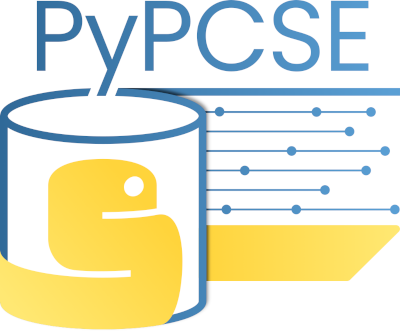Description

PyPCSE is a Python library that provides tools for processing point clouds of symmetrical objects using the Point Cloud Spatial Expansion (PCSE) method. The transformation of a point cloud structure begins with identifying and adopting a symmetry element, which serves as the reference for the spatial expansion. The input data consists of point clouds in ASCII format.
The PyPCSE library includes algorithms for three PCSE method variants:
- Cylindrical
- Spherical
- Ellipsoidal
Detailed descriptions of the PCSE method algorithms can be found in the following publications:
- Cylindrical variant:
Dąbrowski, P., & Specht, C. (2019).
Spatial expansion of the symmetrical objects point clouds to the lateral surface of the cylinder – Mathematical model.
Measurement: Journal of the International Measurement Confederation, 134, 40–47.
https://doi.org/10.1016/j.measurement.2018.10.036 - Spherical and ellipsoidal variants:
Dąbrowski, P. (2024).
Przestrzenne rozwinięcia chmur punktów podstawy teoretyczne i aplikacyjne. (in Polish)
Wydawnictwo Politechniki Gdańskiej.
ISBN: 978-83-7348-919-6
License: CC BY-NC
Author: Dr. Eng. Paweł S. Dąbrowski
ORCID: 0000-0002-6177-0493
E-mail: pawel.s.dabrowski@pg.edu.pl
Dataset file
PyPCSE v1.0 .rar
4.6 MB,
S3 ETag
72b3848303e690a8ad778c15e4d9cb5f-1,
downloads: 0
The file hash is calculated from the formula
Example script for calculation:
https://github.com/antespi/s3md5
hexmd5(md5(part1)+md5(part2)+...)-{parts_count} where a single part of the file is 512 MB in size.Example script for calculation:
https://github.com/antespi/s3md5
File details
- License:
-
open in new tab
CC BY-NCNon-commercial
Details
- Year of publication:
- 2025
- Verification date:
- 2025-04-14
- Dataset language:
- English
- DOI:
- DOI ID 10.34808/we4v-m144 open in new tab
- Verified by:
- Gdańsk University of Technology
Keywords
References
- publication Spatial expansion of the symmetrical objects point clouds to the lateral surface of the cylinder – Mathematical model
- publication Przestrzenne rozwinięcia chmur punktów. Podstawy teoretyczne oraz przykłady aplikacyjne
Cite as
Authors
seen 0 times

